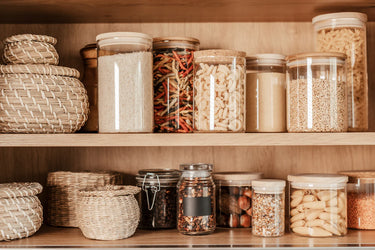What is Damascus Steel Forging?

Known for its distinctive pattern, Damascus steel is a beautiful yet functional type of steel, commonly used to make knives (including HexClad’s own Santoku and Chef’s knives).
Before we dig into the history of Damascus steel, it’s helpful to understand some definitions. Steel is an alloy (a metal made by combining two or more metallic elements) from iron and carbon. Steel can have different amounts of carbon (with a max of 2 percent), with Damascus steel clocking in on the higher end of the scale, containing around 1.5 percent carbon.
Most Damascus steel is made by folding layers of different types of steel together, then forging these into a blade. This method for making Damascus steel knives is known as pattern welding. The different layers of steel create the beauty and functionality of the blade. A second method for making Damascus steel is called crucible welding, which is when a single ingot of steel (historically from India) is forged into a blade and then develops the trademark pattern once it is thermal cycled (aka heated and cooled). To make the pattern show clearly, the blade has to be dipped in acid, which is known as “etching.”
Damascus steel patterns can come in many forms, including a random, organic form, a twisting pattern, a ladder of stacked, wave patterns, and a raindrop-like pattern.
Though the exact history of Damascus steel is lost to time (for now), it’s possible that the name comes from the concentration of trade in steel and other blades in the ancient city of Damascus, Syria during the end of the high Middle ages (around years 1000 to 1300 CE). Some say that the name could also potentially derive from the beautiful appearance of the blades, which looks similar to the famous, patterned damask textiles. A third theory posits that the name is derived from the Arabic word for water, “damas,” a plausible theory when you consider that some cultures refer to patterned steel as being watered.
The method for making Damascus steel has global roots. The technique existed in Greece as early as 1100 BCE, and examples of Damascus steel have been found in what’s now the state of Tamil Nadu, India dating back to the 5th century BCE. Though common kitchen knives are where you’re most likely to find Damascus steel forging these days, the technique more likely used for weapons in the past. Damascus steel lives on as a popular method for making knives thanks to their strong yet lightweight qualities.
Here are some of the benefits of using Damascus steel:
- Strength: Damascus steel is very strong and durable. It can withstand a lot of wear and tear.
- Durability: Damascus steel is very durable. It can last for centuries if it is properly cared for.
- Corrosion resistance: Damascus steel is very resistant to corrosion. It can be used in a variety of different environments without rusting.
- Sharpness: Damascus steel is very sharp. It can easily cut through food or other materials.
- Beauty: Damascus steel is very beautiful. The unique pattern of the steel is both eye-catching and functional.
How to clean rust off a Damascus steel knife
Like any other metal blade, a Damascus steel knife will rust if left to sit in water or another liquid. This is because the prolonged exposure to moisture will cause the iron to rust (due to oxidization). For best care of your Damascus steel knife, wash the knife with a mild dish soap, then immediately dry it with a soft cloth. Got rust? Try making a paste with baking soda and water, then using a toothbrush to apply it to the areas. Scrub until the rust comes off. Avoid using steel wool, as it might damage the distinctive pattern that Damascus steel knives are known for. Then, wash the knife and dry it fully. Some swear by rubbing the blade with a little mineral oil before storing, to protect the blade. (Check out this hack for rust from a Damascus steel blade using Coca-Cola over at Kitchen Lung.)
Sources:
North, Andrew. “An Idiot’s Guide to Damascus Steel Knives | Nothing but Knives.” Www.nothingbutknives.com, 11 May 2021, www.nothingbutknives.com/guide-to-damascus-steel-knives/. Accessed 25 Apr. 2023.
Nutting, Jack, and Edward F Wente. “Steel | Metallurgy.” Encyclopædia Britannica, 14 Dec. 2017, www.britannica.com/technology/steel.
Panseri, Carlo. "Damascus steel in legend and reality." Gladius 4.5 (1965): 5-66.
Staff, BLADE. “Who Made the First Damascus?” BLADE Magazine, 1 Feb. 2022, blademag.com/knifemaking/who-made-the-first-damascus. Accessed 25 Apr. 2023.
Verhoeven, J.D., Pendray, A.H., Dauksch, W.E. et al. Damascus Steel Revisited. JOM 70, 1331–1336 (2018). https://doi.org/10.1007/s11837-018-2915-z
Whitney, Carrie. “The Lost Art of True Damascus Steel.” HowStuffWorks, 17 Dec. 2020, science.howstuffworks.com/damascus-steel.htm.





